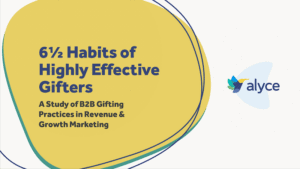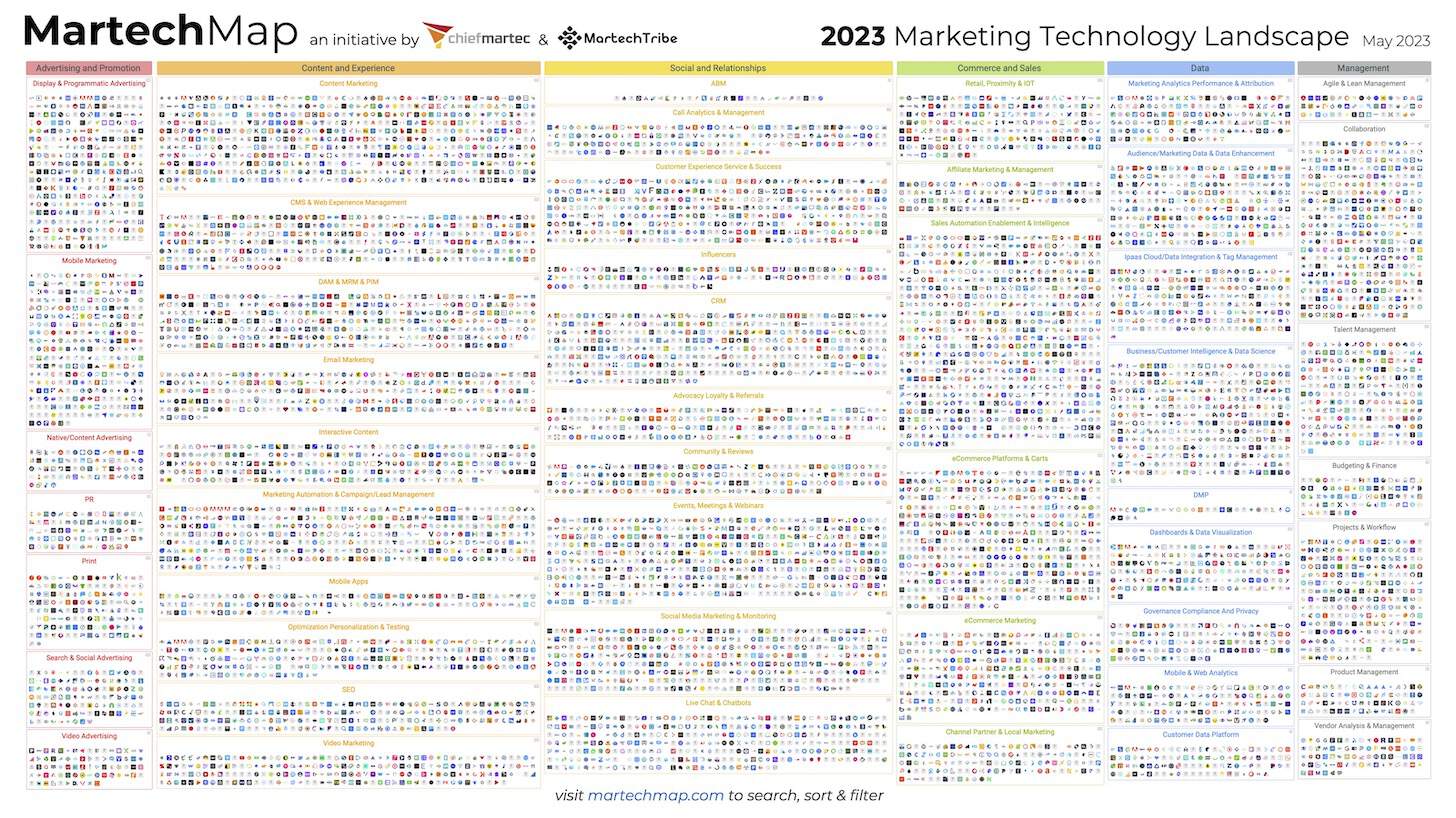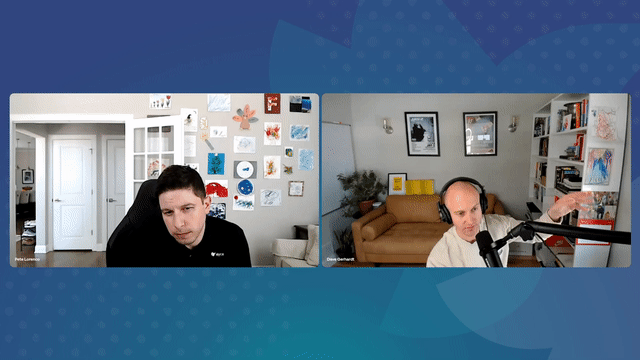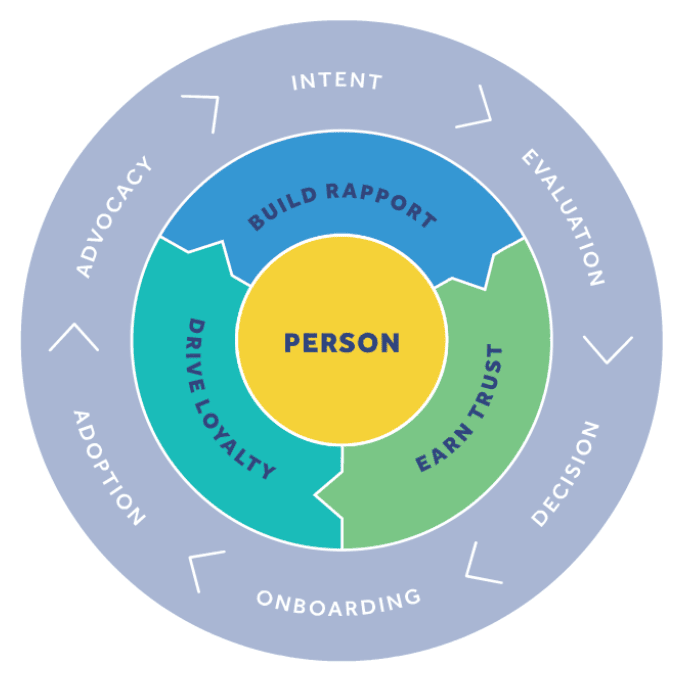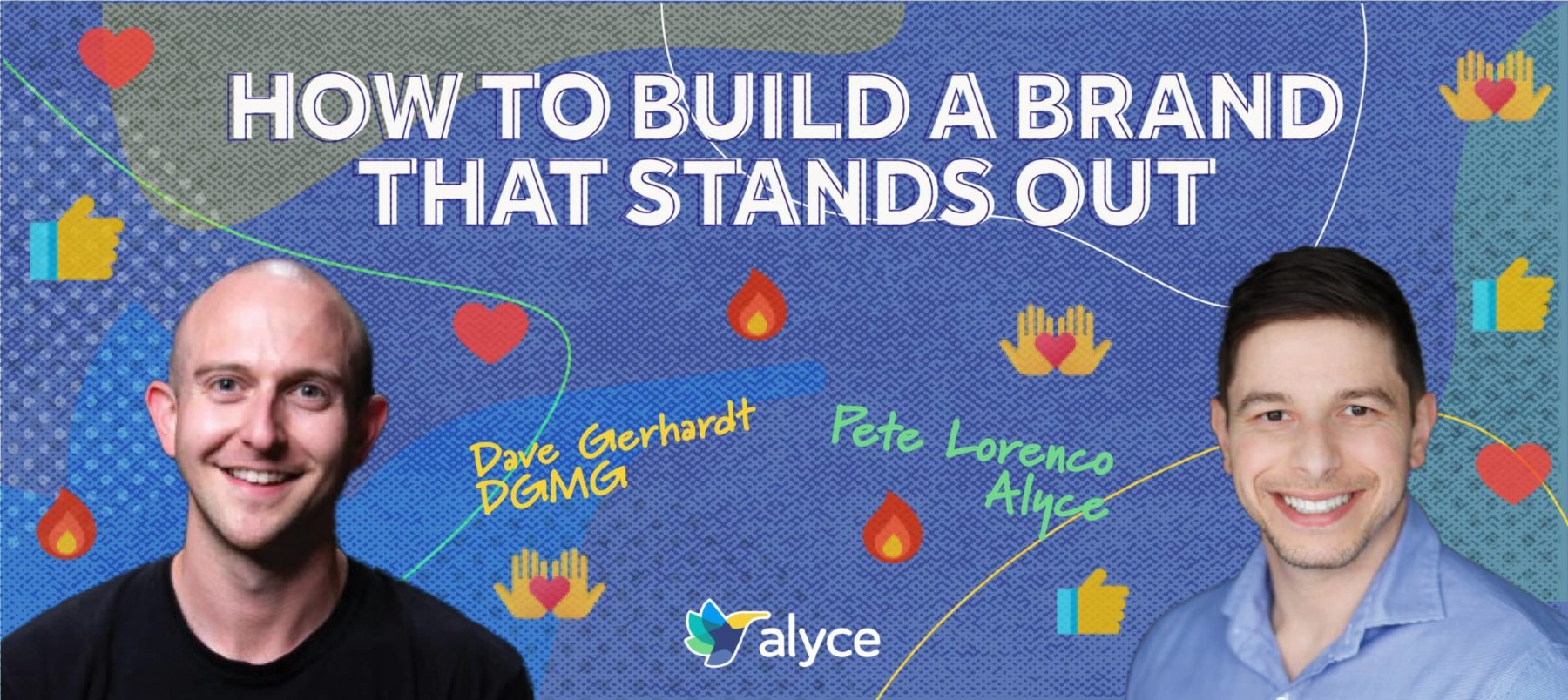
Brand building takes more than a better product to be liked, trusted, and purchased.
What does almost every B2B organization have in common with Waldo? The answer: It’s nearly impossible to spot them in a crowd. Few have found ways to not only be seen in a competitive market but to become its leader. So what was their strategy, and how can you start to build your B2B brand?
Where’s Waldo feels a lot like being in B2B marketing these days. The digital fatigue is real, and it’s only getting worse. Customers are overwhelmed by a deluge of interruptions from all the brands they interact with on a given day.
The good news is it’s not impossible to scale brand awareness without being annoying.
When building your brand in the B2B market, think about these questions:
- How do you become personal and thoughtful about engaging and reaching customers and buyers?
- How do your marketing campaigns succeed in an environment where everyone looks and sounds the same?
Fireside Chat: Building a B2B Brand That Stands Out
Pete Lorenco, VP of Marketing at Alyce, asked these exact questions when he sat down with Dave Gerhardt to chat about all the best ways to make your brand stand out. Watch their fireside chat below:
The discussion touched on real talk and examples of brand building for today’s B2B marketers.
Here are some highlights and takeaways from the interview.
What is a B2B brand?
It helps to think about what is a B2B brand, so you know how it fits into the broader business context and the buying process.
Gerhardt defined brand, at its core, as your reputation. Brand is how you can get people to know, like, and trust you before they buy. He also said it was arguably one of the important marketing puzzle pieces.
At some of the most successful companies like HubSpot, Drift, and Privy, the brand story has been a common denominator for getting people to know, like, and trust your brand. It’s going beyond the transaction. This dynamic is especially true in B2B when buying cycles are six months or longer, with several people weighing in on a new purchase.
Creating a trustworthy, recognizable brand that helps fulfill Seth Godin’s idea of selling a story was the key to Gerhardt’s time at Drift and Privy. “Yes, there was a great product,” he recalled, “yes, there’s a great team, but we created a movement.”
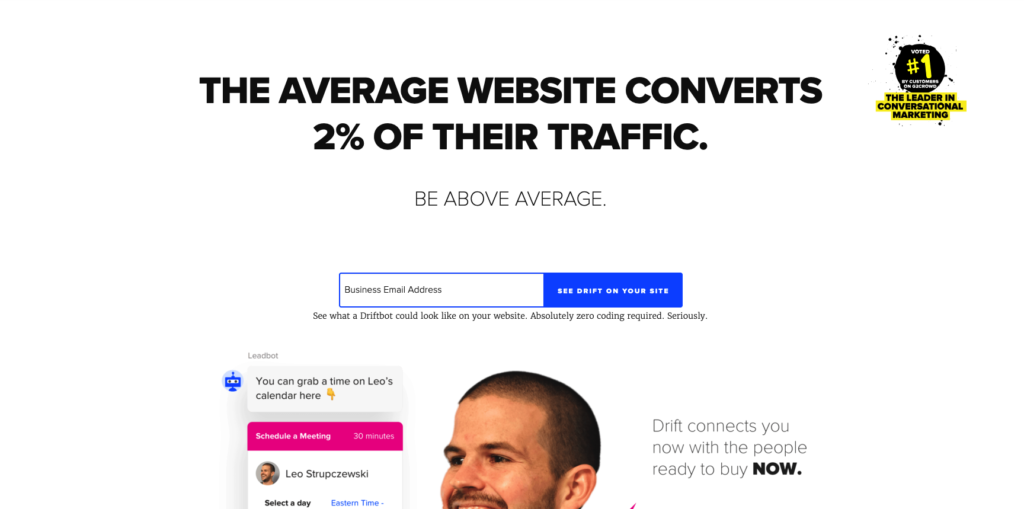
Lorenco asked about whether brand building at Drift was intentional or experimental. Gerhardt credits Drift founder David Cancel for architecting an ambitious vision for their company. He mentioned a few examples of founders who held a bold view of the market and how they wanted their company to lead the industry.
One of Drift’s early signs of a strong B2B brand was creating super-fans that resonated with its worldview, which helped them build a real community.
Pete shared how Alyce hosted a series of events at YOUniverse with no emphasis on driving leads. Instead, they brought sales, marketing, and customer service leaders together to share ideas.
Why B2B brand building is essential
B2B brand building requires every business to carefully consider the content strategy underscoring its vision, opinions, and identity. You can skip it, but it makes growth much harder.
The answer isn’t always more, more, more. Marketers need to think about the content their target audience craves. For instance, it helps to look outside your industry into how B2C brands use content marketing to cut through the noise.
Gerhardt referenced a recent perspective from Seth Godin that separates the pain felt by a B2B buyer from their budget. In short, buyers want to convince their bosses and succeed personally, all while spending the company’s money.
This distinction means your content should make your audience look good to their boss and improve their lives – an often overlooked aspect of B2B marketing channels.
But even with the best content and slick branding, you can still fall short.
As anyone who sat (or slept) through a terrible lecture knows, boredom is the number one cause of death for remembering new information.
If you’re stuck trying to figure out how best to approach this problem,
Dave suggested asking, “Whose content are you actually looking forward to reading and why?”
You need to distribute your brand’s content where your audience is listening. “Meet them on the channels they’re actually at,” Gerhardt explained.
Either way, B2B brand building should consist of three objectives:
- Create content
- Build a community
- Educate them.
Attracting a loyal audience lets you overcome barriers to entry. Email addresses are just one channel. You have to think about how people want to consume your brand – social media, podcasts, and video platforms are relevant touchpoints to reinforce your brand.
Another critical component of brand building is leveraging customer reviews. As companies scale, they need to curate customer reviews, so they can compete against heavyweight brands in their industry. In particular, a volume of reviews helps create categories and “buckets” one brand into a cluster of similar brands.
Be personable without personalization
Many marketers people think about personalization through the lens of technology. That’s right, *|FNAME|*.
Having the correct name and company in an email is not personalization. They are simply merge fields, which ultimately dehumanizes your message. It creates lazy marketing, and your message is easily ignored.
We’ve been fierce advocates for being personable to become more buyer-driven versus seller-focused.
Personalization is a transactional tactic that relies on the concept of persona development – basically, using aggregated data to formulate a fictional picture of your individual prospects and customers – to move them through the various phases of their journey.
With personalization falling flat on delivering the most optimal experience, being personal means speaking to the right person, at the right time, and focusing on the right thing. Them.
“The best way to do personalization is to be personal,” opined Gerhardt. It’s refreshing to hear the simplicity of the advice for B2B brand managers. It contradicts almost everything we’ve learned about email marketing.
Try adding a bit of human touch to your next campaign, more than you’ve tried before. It might feel unnatural, but it’ll help you stand out as long as you’re being genuine.
Today’s digital marketing tools aren’t the enemy. For instance, shooting a quick video on Vidyard can add a human element to your marketing. This level of one-to-one outreach builds brand equity and can make you a better B2B marketer.
People crave authenticity
Authenticity isn’t about being childish with your audience. For strong B2B brands, being authentic means you stand up for something and project it through all of your content.
Rather than just posting links on a corporate social media platform, leverage strong brand marketing leaders who can tell captivating stories. Below are examples of how Pete Lorenco and Nick Bennett stay top of mind with their target audience, comprising B2B buyers and influencers.
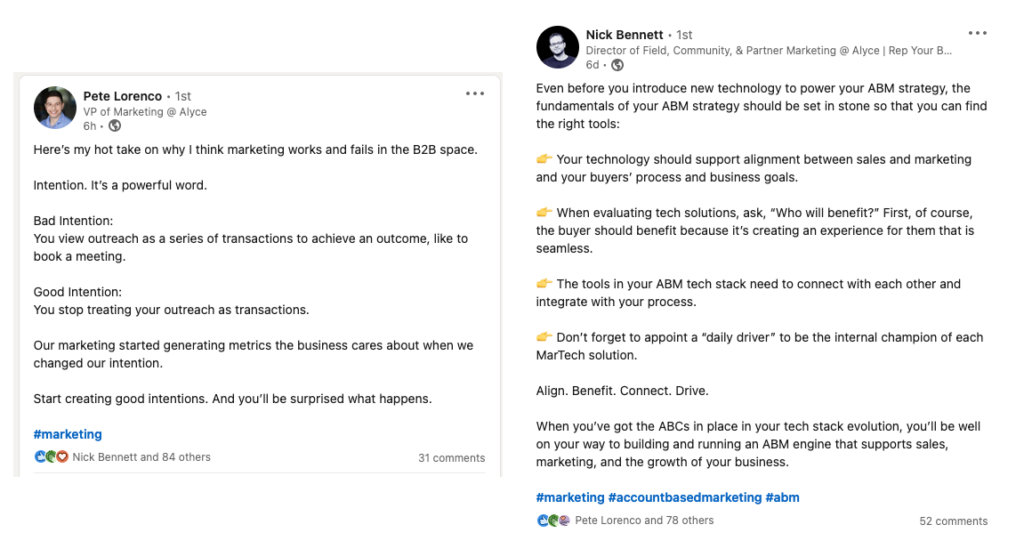
It also means not trying to impress buyers by being comfortable in your own skin. So how do you layer that realness into your brand?
Gerhardt sees a strong link between trust and authenticity. “Everybody’s B.S. meter is higher than ever today. Authentic doesn’t mean saying ‘Hey, it’s Dave in my underwear being real’.”
You have to define what your brand messaging means to you and your audience. For instance, here at Alyce, we stand by the belief that a performant marketing strategy places audience needs first.
Strong brands build momentum
Building a brand isn’t flipping a switch. If it were that easy, everyone would do it. These marketing efforts work like a flywheel, once popularized by author Jim Collins.
Marketing becomes easier as you build momentum. When you have strong views, a captivated audience, and a product-market fit, people carry your message further. The opposite force is inertia. You’ll get the brand flywheel moving when you apply a concentrated effort here.
Our webinar series, Momentum Makers, gives you an inside look at effective sales and marketing campaigns that resonate with prospects and customers alike. You won’t want to miss them!
For more insights into how founders can build successful brands, pick up Dave Gerhardt’s book, Founder Brand.




